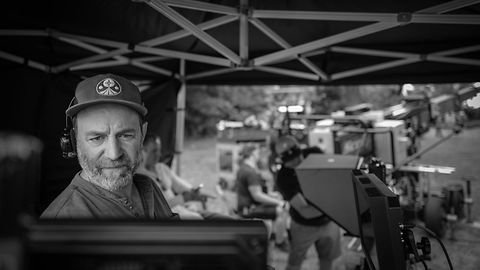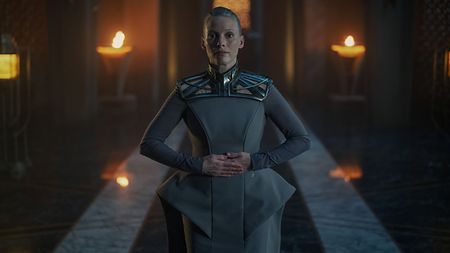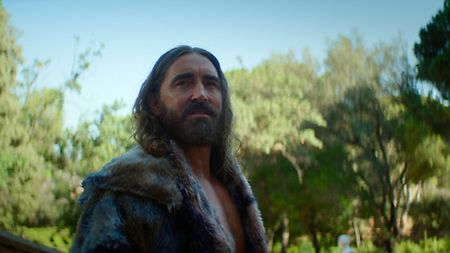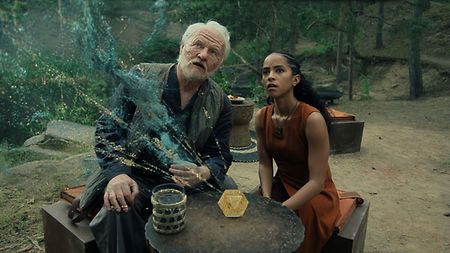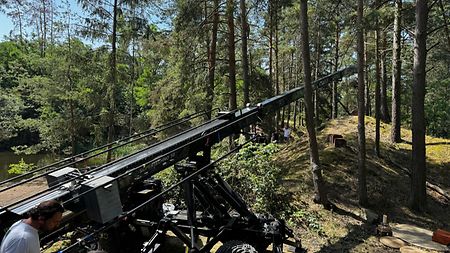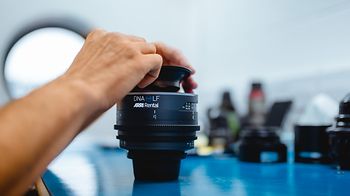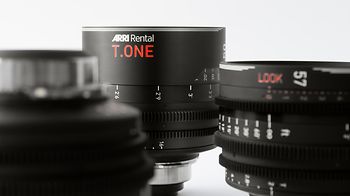What were the other important inter-departmental collaborations for you?
We became a big family on “Foundation” over the course of three seasons. As a result, we developed a shorthand that made it simple, fun, and productive to workshop ideas. Both Chris Maclean and Rory Cheyne, our talented production designer, were very open to collaboration and generous with their time in fleshing out sequences. The two other cinematographers, Alar Kivilo ASC and Owen McPolin ISC, I consider to be friends; we all had a great time discussing approaches and even covering each other’s work when necessary; they both shot some lovely scenes for my episodes, and I can’t thank them enough.
How did you work with gaffer Martin Granilla on the lighting concept?
Martin was the lead gaffer for the season and the gaffer for my block. He is a superb technician with a fantastic eye and his contributions cannot be overstated. In conjunction with our excellent rigging gaffer Graeme Haughton, he got all three blocks up and running concurrently across three countries.
We leaned heavily into LED-based lighting for a lot of our sets because of its obvious flexibility and because the sets had to be functional for various looks and times of day. We were lucky enough to get some of the new ARRI SkyPanel X panels. The improved output, extended CCT range, super-cool HyPer Optic, X21 Dome, and IP66 rating are great improvements, and we took advantage of all of them. Having both a hard light and soft light option is wonderful. The SkyPanel X is, in my opinion, the best and most versatile light of its class on the market; I only wish we’d had more of them.
One of our outdoor sets, the Summer Palace, had a lot of work in it at various times of day and night for our block and Martin had a brilliant idea for an overhead lighting rig that allowed us to shoot day, night, rain—whatever. Over the course of a few nights we were able to cover all our work and switch between looks in a very short time. That rig saved us a least a whole day of shooting in that set, so it was worth the effort.
Where did you use ARRI Rental’s HEXATRON offroad crane base and what were its advantages?
We used it for all our sequences with difficult terrain and hard-to-get-to locations. It’s a fantastic machine and the design is just a wonder to behold—excellent traction and solid wheelbase specs, combined with a wonderfully designed self-levelling component. It got us everywhere, even the most precarious of spots. The HEXATRON is easily the most versatile crane base I have ever used.
What was the most important piece of advice given to you as a young cinematographer?
The best advice I ever received was from my early mentor, Derek Vanlint BSC, CSC. He often said, when speaking of how to approach lighting a scene, “No guts, no glory,” and he very much lived by those words. His point was that being safe in your lighting will only ever yield safe results, which are almost always disappointing. The pursuit of good lighting and the only path towards growth as a cinematographer involves pushing yourself beyond your comfort zone and taking risks. The greater the risks, the greater the rewards. Sadly, Derek passed some time ago, and I can’t pretend that my work will ever rise to his level of mastery, but he’s still whispering in my ear even now, every day that I’m on a set.
